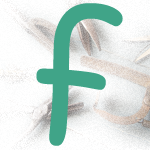About Us
Old Garden Tools is the forty year passion of a collector of beautiful vintage and antique garden tools.
In the absence of a museum site it has been decided to offer a cyber museum or virtual museum to give the world a database or picture book of these beautiful things and to be a resource to collectors and researchers in the field of tools and ephemera used in the art and science of gardening.
We love the variety and strength of antique and vintage garden tool construction as compared to modern tools. Many of these old tools have lasted several lifetimes. The preservation and sharing with you of lovely old garden tools with their wood and metal patinated by years of use is of great importance to us.
The following is an excerpt from The Landscape Magazine January 2016
Two hundred years of garden paraphernalia fills neat rows of open shelves in a huge storage building. Watering cans thrust forth their spouts from a top shelf, apple pickers with baskets resembling oversized shuttlecocks stand in line in a corner and spades of every conceivable shape hang uniformly from a wall. Smaller tools are grouped on the shelves according to their function. Approximately 3,000 different items make up this well ordered personal museum charting the history of horticultural work. The beautifully polished garden tools represents 40 years of collecting.
The vintage implements range from the instantly recognisable to the strangely specialised. As well as the folding knives, pruning saws, shears and forks, there is a narrow spade for lifting horseradish and at least 40 different asparagus knives. Other items include long glass cucumber straighteners, a mole catcher and an object that looks like a hockey stick with a blade for cutting turf. There is even a shelf full of children’s tools, all as sharp and effective as their adult equivalents.
We love the combination of the metal and the wood, the wear on the blade and the patination you get from years of hands using them. They’re tactile, practical and appeal to the artistic sense. A self-confessed hoarder by nature, the founder started looking around for more items. “One stimulating find early on was when my gardener came back with a pair of 1940s’ ‘Greensleeves’ hedge clippers that had four blades instead of the usual two. They were invented to try to cut quicker and only two blades show when they’re closed. He paid £1 for them at a boot fair,” he says. “As I amassed a few things, I came to realise that I had the makings of a small collection so it gathered momentum. I started getting different versions of items and looking at manufacturers’ names. The better makers, mostly in Sheffield, put their stamp on tools. I got them mainly from antiques and collectors’ fairs and from boot sales. Then people I knew would give or sell me things.
A most recent discovery is a turf racing iron, bought at an antiques fair. These were used to cut lines in the grass before lifting the turves with a spade. “I knew they existed, though I’d never seen one. It’s from the 1930s, probably, and is made of ash. It has lovely wear where it has been run along the ground over the years. The blade bolted to the bottom has worn down too. The hairs on the back of my neck stood up when I saw it.” The majority of the items date from the 1950s. In the middle of the 19th century the Industrial Revolution was at its peak and manufacturing processes took over from individually crafted tools. Until the growth of the suburbs after the First World War, it was mainly the wealthy who had gardens for recreational use. Ordinary people might have had small cottage gardens for growing produce. By the late-Victorian era, tools were available for every specific use. Unlike the multi-purpose tools of today, manufacturers marketed a staggering array of different implements for both commercial and domestic use. Once stainless steel was developed in the first decades of the 20th century, tools became more durable. “I like the fact that there were lots of specialised things,” there aren’t today, it’s a very limited range now.” Among the oddities in the collection, there are a large variety of beautifully crafted flower pickers, where the mini-scissors at the end were fashioned to clip and hold a single bloom. Glassware particularly appeals. “Some of the cloches are massive and seem indestructible.” Elongated glass containers in a range of sizes ensured straight cucumber growth. Garden ephemera, apart from tools, includes a late 19th century copper rain gauge that resembles a clock. There is also a complete boxed set of grass-seed samples labelled Suttons’ Vasculums. At the other end of the familiarity scale, there is a simple set of three post-war tools. “They were the property of a gentleman who had them all his gardening life. They’re pretty ordinary – a spade, a fork and rake – but I appreciate that they have honest wear on them and are connected to one man.” A favourite is what is assumed to be a 19th century seed drill. It has a wooden spade handle, a row of teeth at the bottom and small rollers at the side. It was probably made for one person’s own use. You can see how it has been crafted and there are layers of interesting patination where it has been exposed to weather and soil.”
We do only minimal restoration on our tools. “I just clean things as they are and put on good-quality furniture polish with a cloth. On the steel, sometimes I use blocks of a fine, abrasive compound on a polishing wheel to get rid of fresh rust, then wax it. I wouldn’t take off any of the patination on the wood or any old rust. I don’t want to lose the history.” “It is the collecting of the vintage tools that remains
my passion.” “The hunt is the most fun. When you find something you didn’t know existed, you get great satisfaction. Although it’s hard to find things I haven’t got, I still look forward to upgrading what exists already, and collecting constantly throws up surprises. Every month or two, I find something interesting. “I want to preserve them for posterity. The tools tell a story about the relationship between form and function.”
Please contact us if you require further information.


